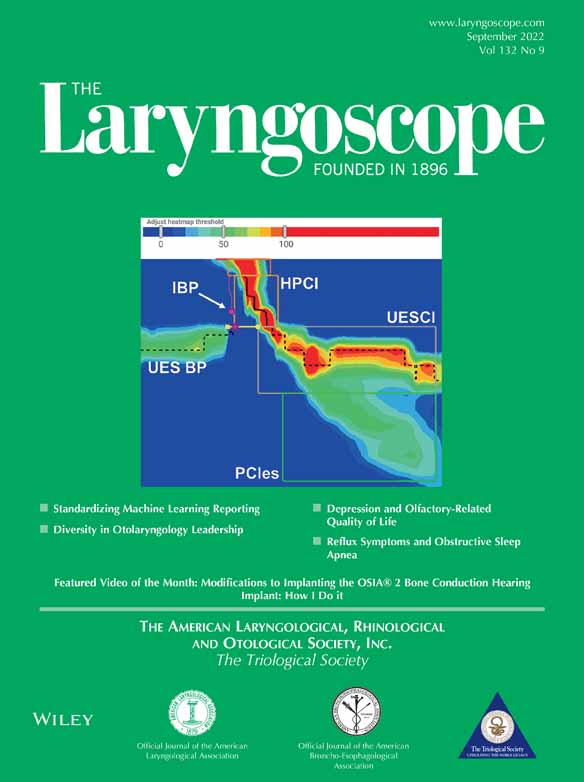Neck Imaging Reporting and Data System Category 3 on Surveillance Computed Tomography: Incidence, Biopsy Rate, and Predictive Performance in Head and Neck Squamous Cell Carcinoma
Editor's Note: This Manuscript was accepted for publication on December 29, 2021.
A preliminary version of this work was presented as an oral scientific abstract at the 55th Annual Meeting (September 8–12, 2021) of the American Society of Head and Neck Radiology.
Mercedes Porosnicu is a consultant for Boehringer Ingelheim and received research support from AstraZeneca, Astrellas, and Eli Lilly. All other authors declare no conflict of interest.
The authors have no other funding, financial relationships, or conflicts of interest to disclose.
Abstract
Objectives
Neck Imaging Reporting and Data System (NI-RADS) is a radiology reporting system for head and neck cancer surveillance. Imaging findings of high suspicion for recurrence are assigned Category 3 and recommended for “Biopsy, if clinically indicated.” After implementing NI-RADS for surveillance neck computed tomography (CT), our objectives are to determine the incidence of squamous cell carcinoma (SCC) Category 3 lesions in the year post-implementation, the associated biopsy rate, and the positive predictive value of NI-RADS 3 for SCC recurrence.
Study Design
Retrospective cohort study.
Methods
Neck CTs reported with NI-RADS between February 2020 and February 2021 were reviewed to identify patients undergoing surveillance for SCC assigned NI-RADS 3. Cancer recurrence, defined as positive biopsy result or treatment of clinically determined recurrence, was determined by electronic medical record review.
Results
During the study period, 580 neck CTs were reported with NI-RADS, of which 39 (7%) CTs obtained in 37 unique patients (28 male, 9 female, mean age 66.6 years) formed the study cohort. Biopsies were obtained in 23 lesions (45%), of which 17 (74%) were positive for recurrent SCC. One nondiagnostic biopsy was clinically determined to represent recurrence. Of 28 (55%) lesions not biopsied, 18 (64%) were ultimately treated as clinically determined recurrence. Thus, among 51 individual NI-RADS 3 lesions (32 primary, 19 neck), 36 (71%) represented recurrence.
Conclusion
The incidence of NI-RADS 3 lesions in our cohort was 7%. The biopsy rate was 45%, and the overall positive predictive value of NI-RADS 3 for recurrent SCC was 71%. Category 3 lesions are associated with substantial SCC recurrence risk and should be managed accordingly.
Level of Evidence
4 Laryngoscope, 132:1792–1797, 2022




